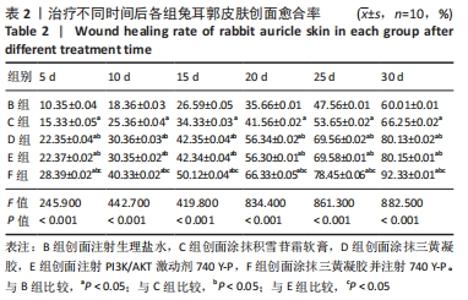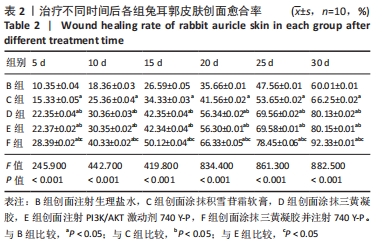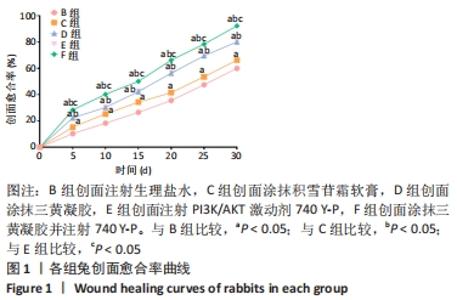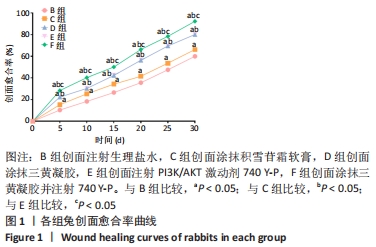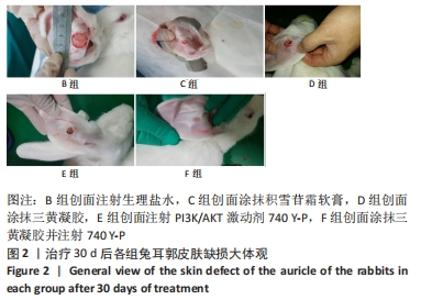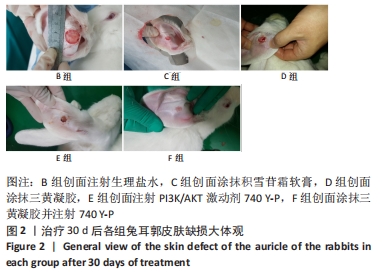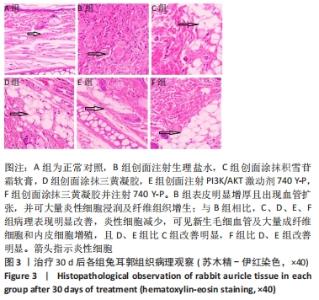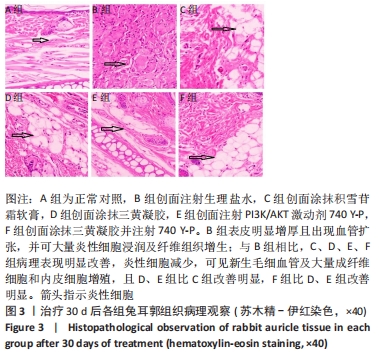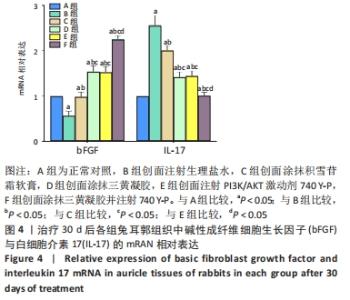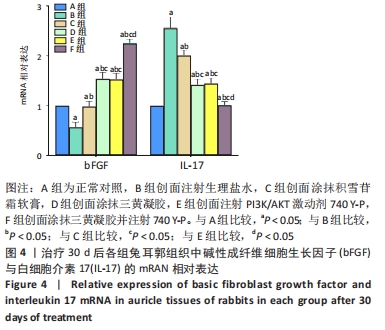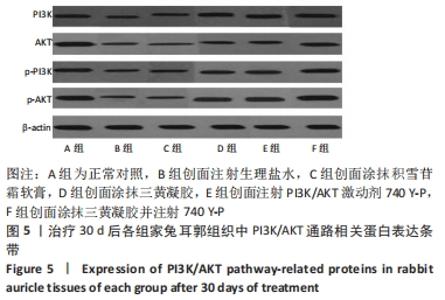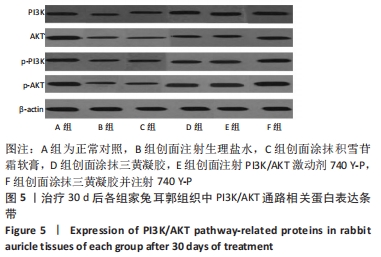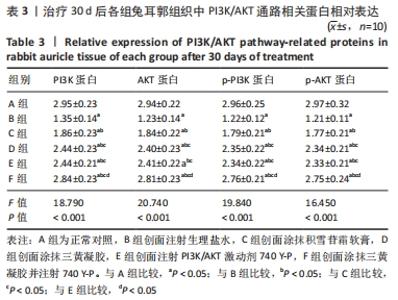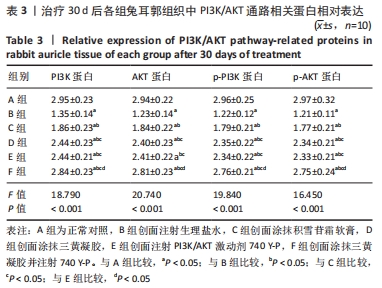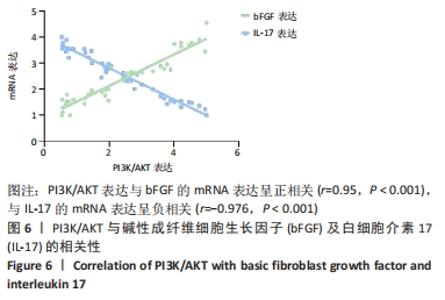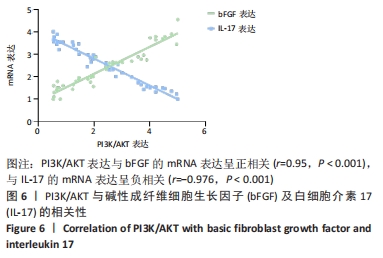[1] 朱曦.祛腐生肌膏治疗四肢皮肤缺损的临床疗效观察[D].福州:福建中医药大学,2020.
[2] ZHANG WJ, MING LG, SUN JJ. Epithelial defect repair in the auricle and auditory meatus by grafting with cultured adipose-derived mesenchymal stem cell aggregate-extracellular matrix. Chin Med J. 2019;132(6):680-689.
[3] 李雪盛,孙建军.再生医学之组织工程耳廓软骨再生与功能重建[J].临床耳鼻咽喉头颈外科杂志,2019,33(6):567-571.
[4] CHEN X, ZHANG W, SUN L, et al. Tectorigenin protect HUVECs from H2O2-induced oxidative stress injury by regulating PI3K/AKT pathway. Tissue Cell. 2021;68:101475.
[5] 杨青,薛萍,窦文婕,等.毛囊单位提取移植术联合重组牛碱性成纤维细胞生长因子以及米诺地尔治疗继发性瘢痕秃发的临床效果[J].中华烧伤杂志,2021,37(8):718-724.
[6] LI H, TSOKOS GC. IL-23/IL-17 Axis in Inflammatory Rheumatic Diseases. Clinl Rev Aller Immunol. 2021;60(1):31-45.
[7] 田媛,马秀岚.异种脱细胞真皮基质修复耳廓前面皮肤缺损[J].中国医科大学学报,2020,49(12):1136-1139.
[8] 何晓微,黄欣,狄钾骐,等.壮药南酸枣树皮对大鼠慢性难愈合创面PTEN、VEGF表达的影响[J].海南医学院学报,2019,25(11):801-804+809.
[9] 谢千.三黄凝胶对大鼠耳廓复合痤疮模IL-6,IL-10,CTGF,VEGF蛋白及基因表达的影响[D].兰州:甘肃中医药大学,2020.
[10] 张娅茹,王思农.三黄凝胶剂的研制及质量控制[J].西部中医药, 2011,24(8):28-30.
[11] ZHAN G, HAN L, LI Z, et al. Identification and Documentation of Auricle Defects using Three-dimensional Optical Measurements. Sci Rep. 2018; 8(1):2869-2869.
[12] 周玲,杨云,吴雨,等.点阵CO_2激光联合积雪苷霜软膏治疗瘢痕疙瘩临床分析[J].中国美容医学,2021,30(6):90-94.
[13] 肖静秋,王永慧,郑婷,等.三黄凝胶对大鼠耳廓痤疮模型血清IFN-β和IL-6的影响[J].中国皮肤性病学杂志,2019,33(4):458-462.
[14] ZGÜR E, KAMILOLU U, TEMIZ P, et al. Skin Cancers of the Auricle: A Retrospective Analysis of 41 Patients. Turk Arch Otorhinolaryngol. 2020;58(3):169-173.
[15] 肖静秋,何文昭,冯大鹏,等.三黄凝胶对耳郭痤疮模型大鼠血清VEGF、PDGF含量的影响[J].甘肃中医学院学报,2019,36(2):12-15.
[16] ENDO K, MATSUI R, ASAMI T, et al. The suppression of IL-17 production from T cells by gallate-type procyanidin is mediated by selectively inhibiting cytokine production from dendritic cells. Biomed Pharmacoth. 2021;137(2):111346.
[17] 马超,焦建军.bFGF联合胶原膜对硬腭软组织缺损大鼠病理及创面愈合的影响[J].转化医学杂志,2021,10(1):21-25.
[18] ALSHEHRI F, WHYTE CS, MUTCH NJ. Factor XIII-A: An Indispensable “Factor” in Haemostasis and Wound Healing. Int J Mol Sci. 2021;22(6): 3055.
[19] 王思农,刘芳,张博,等.三黄凝胶对大鼠皮肤创伤愈合过程中bFGF和TGF-β1表达的影响[J].中国麻风皮肤病杂志,2013,29(2): 96-98.
[20] ROY P, KALRA N, PRASAD S, et al. Retraction Note: Chemopreventive Potential of Resveratrol in Mouse Skin Tumors Through Regulation of Mitochondrial and PI3K/AKT Signaling Pathways. Pharmac Res. 2021; 38(2):375.
[21] 李利青,冯时,唐乾利.皮肤再生医疗技术作用IGF-1/PI3K/AKT信号通路调控难愈合创面血管生成的机制研究[J].中华中医药杂志, 2019,34(6):142-147.
[22] 李利青,林也,葛斌,等.湿润暴露疗法/湿润烧伤膏干预PI3K-Akt-mTOR信号通路促进体表慢性难愈合创面修复的实验研究[J].中国中西医结合杂志,2019,39(5):583-590.
|
